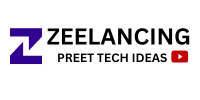Essential WordPress Security Tips to Safeguard Your Website
Introduction to WordPress Security
In the ever-evolving digital landscape, WordPress remains one of the most popular platforms for website development. However, this popularity also renders it a prime target for cyberattacks and malicious activities. As a WordPress site owner, understanding the importance of security is paramount in safeguarding your online presence. Vulnerabilities such as outdated plugins, weak passwords, and unsecured servers often expose WordPress sites to security threats, compromising the integrity and availability of the website.
Cybersecurity incidents can lead to unauthorized access, data breaches, and loss of sensitive information, which can severely affect not only the reputation of a business but also its financial standing. Consequently, implementing effective security measures is crucial for protecting critical data from potential breaches. WordPress website owners need to recognize that security should not be an afterthought, but rather an integral part of their site management practices.
Moreover, the evolving strategies of cybercriminals necessitate a proactive approach. Regular WordPress core updates, themes, and plugins are vital as they often come with security patches to defend against newly discovered vulnerabilities. Additionally, adopting security plugins tailored for WordPress can provide an extra layer of defense by enhancing site security features such as firewalls and malware scanning.
In a world increasingly reliant on digital interactions, the consequences of insufficient security can be dire. It becomes imperative for website owners to invest time and resources to safeguard their WordPress sites against potential threats. By prioritizing security, the integrity of the website and the confidentiality of the data it holds can be maintained, ensuring a trustworthy user experience.
Keep WordPress Updated
Maintaining an up-to-date WordPress installation is one of the most effective measures a website owner can take to enhance security. Regular updates to the WordPress core, along with themes and plugins, play a crucial role in safeguarding your website against potential threats. As developers identify bugs and vulnerabilities, they often release patches through updates, which address these issues and bolster the site’s defenses.
Firstly, the WordPress core is regularly updated to fix security flaws and improve overall functionality. By neglecting these updates, a site runs the risk of becoming susceptible to known exploits, as hackers often target outdated versions that contain vulnerabilities. Consequently, it is imperative to monitor for updates and implement them promptly. This proactive approach minimizes the risk associated with operating an outdated version of WordPress.
The importance of updating themes and plugins cannot be overstated either. Similar to the core, themes and plugins are frequently maintained to address security vulnerabilities and compatibility issues. Many plugins, particularly those that offer extensive functionalities, can introduce vulnerabilities if not properly maintained. Therefore, website administrators should regularly check for updates and apply them as needed to maintain a secure environment. Furthermore, choosing reputable plugins and themes can significantly mitigate security risks, as established developers are more likely to provide timely updates and support.
In addition, enabling automatic updates for the WordPress core, themes, and plugins can streamline the process, ensuring that your site remains secure with minimal effort. This feature can be particularly beneficial for those who may overlook manual updates. Overall, keeping all components of your WordPress site updated is essential in committing to a secure and reliable website. By taking these steps, website owners can significantly reduce the likelihood of security breaches and enhance their site’s resilience against attacks.
Use Strong Passwords and User Permissions
One of the fundamental practices for fortifying WordPress security is the use of strong, complex passwords. Simple or easily guessable passwords are akin to leaving the door to your website wide open. To create a strong password, consider employing a combination of uppercase and lowercase letters, numbers, and special characters. A minimum length of at least 12 to 16 characters is recommended, as longer passwords significantly reduce the risk of breach through brute-force attacks.
Using a password manager can simplify the process of generating and storing complex passwords. This tool can create unique passwords for every login, negating the need for repetitive or easily remembered phrases. Additionally, it is crucial to regularly update passwords, especially if you suspect that your site may have been exposed to vulnerabilities.
Equally important to password strength is the management of user permissions. WordPress allows for different roles, ranging from ‘Subscriber’ to ‘Administrator,’ each having varying levels of access and control. Therefore, assigning appropriate user roles is vital in securing your site against unauthorized actions. Ensure that only those who need administrative access are granted such permissions. For instance, an editor may only need to write or edit posts without requiring full administrative privileges.
Audit user accounts regularly to verify that only the necessary personnel can access your site. Remove any inactive or unnecessary accounts promptly, as these can become potential targets for hackers. By enforcing rigorous password protocols and carefully managing user permissions, website owners can significantly mitigate security risks and enhance the overall integrity of their WordPress sites.
Implement Two-Factor Authentication (2FA)
Two-factor authentication (2FA) is a security mechanism that enhances the protection of online accounts by requiring two distinct forms of verification prior to granting access. This method adds an additional layer of security to your WordPress website, significantly reducing the risk of unauthorized access. The primary factor is typically the user’s password, while the second factor may be a code sent via SMS, an authentication app, or an email. By implementing 2FA, website owners can bolster their defenses against hacking attempts and unauthorized logins, making it a crucial component of WordPress security.
One of the key benefits of using 2FA in conjunction with your WordPress site is its ability to thwart attacks that may succeed in obtaining user passwords through phishing schemes or data breaches. Even if a malicious actor manages to capture a user’s password, they will still require the second factor of authentication to gain access, thereby enhancing the safety of sensitive information stored within the site.
Setting up two-factor authentication on your WordPress site is straightforward and can be accomplished by utilizing various plugins designed for this purpose. Some of the most popular plugins include Google Authenticator, Duo Two-Factor Authentication, and Wordfence Security. These plugins not only provide an easy way to enable 2FA but also offer additional security features that can further protect your website from potential threats.
Once a plugin is installed, you will typically need to configure the desired authentication method and link it to your user accounts. This process may involve scanning a QR code with your authentication app or entering a provided code via SMS. By integrating 2FA into your security practices, you significantly strengthen your WordPress site’s defenses, reducing the likelihood of unauthorized access and ensuring your data remains secure.
Regular Backups are Essential
Maintaining the security of a WordPress website extends beyond just implementing firewalls and security plugins; one of the most critical components is ensuring that regular backups are performed. A backup serves as a fallback option during unforeseen circumstances such as cyber-attacks, server failures, or accidental data deletions. Therefore, incorporating a reliable backup solution into your website maintenance strategy is essential.
There are various backup solutions available, ranging from manual methods to automated plugins. Popular plugins such as UpdraftPlus, BackupBuddy, and VaultPress provide user-friendly interfaces that allow website owners to schedule regular backups without concern for the underlying complexities. These automated tools enable users to back up not just their database but also theme files, plugins, and media uploads, ensuring that all elements of the site are preserved.
When determining the frequency of backups, it is vital to consider how often your content changes. For websites with frequent updates, such as e-commerce platforms or blogs with regular posts, daily backups may be prudent. Conversely, less active sites might require weekly or even monthly backups. Ultimately, striking a balance between backup frequency and server resource consumption is essential to optimize performance while ensuring data integrity.
In addition to regular backups, securely storing these backups is crucial. Use reliable cloud storage services or offsite physical drives to keep backups in places that are not susceptible to the same threats as your primary website. As with any security measure, redundancy is key: having multiple backup copies stored in different locations can significantly enhance your site’s recovery capabilities in case of data loss or corruption.
Overall, integrating regular backups into your WordPress security protocol is indispensable. It not only fortifies your preparedness against data loss but also provides peace of mind, knowing that your website can be restored swiftly and efficiently should the need arise.
Secure wp-config.php File
The wp-config.php file is a vital component of any WordPress installation, as it contains sensitive information critical to the functioning and security of the website. This file stores the database credentials, secret salts, and other important configurations that allow WordPress to operate smoothly. Due to the sensitive nature of the data housed within, the wp-config.php file can often become a target for hackers aiming to compromise the site. Protecting this file is therefore essential in establishing a robust security posture for your WordPress site.
One effective way to enhance the security of the wp-config.php file is by changing its permissions. By setting the file permissions to 440 or 400, you can restrict access to only the server user, effectively preventing unauthorized users from viewing or modifying the file. This simple yet effective measure helps mitigate the risk of exploitation by potential attackers, who may otherwise gain access to sensitive site information.
Additionally, an excellent practice to improve the security of your wp-config.php file is to move it to a non-public directory. The WordPress configuration file is typically located in the root directory of the WordPress installation, but it can be safely relocated one directory level up, outside the web root. By doing this, you make it progressively more challenging for hackers to locate and access the file, thereby enhancing the overall security of your website.
To summarize, securing the wp-config.php file is paramount to safeguarding your WordPress website against potential security threats. By implementing measures such as altering file permissions and relocating the file to a more secure location, you significantly reduce the likelihood of unauthorized access and protect your site’s integrity. Prioritizing the protection of this key configuration file will fortify your website against evolving security challenges.
Use Security Plugins
To enhance the security of a WordPress website, utilizing reputable security plugins is of paramount importance. These plugins offer various features designed to protect against common vulnerabilities and cyber threats. Some of the most well-regarded plugins include Wordfence, Sucuri Security, and iThemes Security. Each of these plugins provides distinct functions, such as firewalls, malware scanning, and login security enhancements.
Wordfence, for example, is renowned for its Web Application Firewall (WAF) and robust malware scanning capabilities. The firewall helps block malicious traffic, while the malware scanner detects any harmful code on the site. It also includes a live traffic view and security incident recovery tools, making it a comprehensive solution for many WordPress users. Installation is straightforward; simply download the plugin from the WordPress repository, activate it, and follow the setup wizard for configuration options.
Sucuri Security is another recommended plugin, particularly for users looking for a solution that includes a website application firewall, security activity auditing, and post-hack actions. It offers an effective way to monitor security-related events and implement protective measures against threats. Sucuri’s easy installation process involves similar steps to Wordfence, ensuring users can quickly get started on fortifying their sites.
iThemes Security provides a multitude of features, including two-factor authentication, password expiration, and brute force attack prevention. By installing this plugin, users gain access to over 30 ways to secure their WordPress sites effectively. The setup process is seamless, with guided configurations that help users fine-tune their security settings according to their specific needs.
When using security plugins, it is advisable to regularly update both the plugins and WordPress core to mitigate vulnerabilities. No single plugin can guarantee complete security, but by leveraging multiple reputable security solutions and adhering to best practices, site owners can significantly enhance their website’s security posture.
Monitoring and Scanning for Vulnerabilities
Ongoing monitoring and scanning play a crucial role in maintaining the security of a WordPress website. As digital landscapes evolve, so do the tactics that malicious actors use to exploit vulnerabilities. Therefore, implementing a robust monitoring system is essential for safeguarding your site. Regularly scanning your WordPress installation for inherent weaknesses can help identify potential threats before they escalate into more serious issues.
One effective method for conducting security scans is utilizing specialized security plugins designed for WordPress. These plugins can automatically check for malware, security breaches, outdated software, and common vulnerabilities. Renowned security tools offer features such as file integrity monitoring, which alerts you to unauthorized changes to your files. Additionally, these plugins often provide vulnerability assessments, giving you clear insight into what components of your site require immediate attention.
Furthermore, regular audits enhance your website’s security by providing an overview of your current security posture. By performing thorough audits, you can assess not only your plugin and theme vulnerabilities but also review your site’s compliance with security best practices. Regular audits can help ensure that your website adheres to the latest security standards, greatly reducing the risk of falling victim to cyberattacks.
Incorporating automated tools and maintaining a schedule for manual security checks can streamline this process, allowing you to identify vulnerabilities promptly. By staying proactive regarding your website’s health through constant monitoring and scanning, you not only protect your assets but also foster trust with your users. Ultimately, a strong emphasis on ongoing security measures ensures a more resilient online presence and contributes significantly to the overall integrity of your WordPress site.
Conclusion: Building a Secure WordPress Environment
Securing your WordPress site is a multifaceted endeavor that requires a proactive approach and ongoing vigilance. Throughout this blog post, we have highlighted essential tips that can significantly strengthen the security of your website. From implementing strong passwords and timely updates to utilizing security plugins and consistently backing up your data, each of these strategies plays a crucial role in building a secure WordPress environment.
It is imperative to recognize that vulnerabilities exist in any online platform, including WordPress. Therefore, adopting a comprehensive security strategy is not merely optional but essential for safeguarding your website against potential threats. Each layer of security—be it two-factor authentication, regular malware scans, or limiting login attempts—contributes to mitigating risks. Furthermore, staying informed about the latest security trends and threats can empower you to take proactive measures.
Remember that while WordPress provides a strong foundation, the responsibility for securing your site ultimately falls on you as the website owner. Engaging in routine checks and improvements to your security posture will create a robust defense against emerging threats. Additionally, familiarizing yourself with the available resources, including community forums and expert advice, can provide valuable guidance on maintaining a secure environment.
In summary, safeguarding your WordPress site should be an ongoing process that prioritizes both preventive and responsive measures. By implementing the aforementioned strategies and staying alert to potential vulnerabilities, you can significantly enhance your site’s security. Taking these steps will not only protect your website but also instill confidence in your visitors, fostering a trustworthy online experience. Secure your WordPress environment today to preserve your efforts and maintain the integrity of your digital presence.



